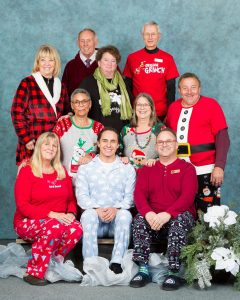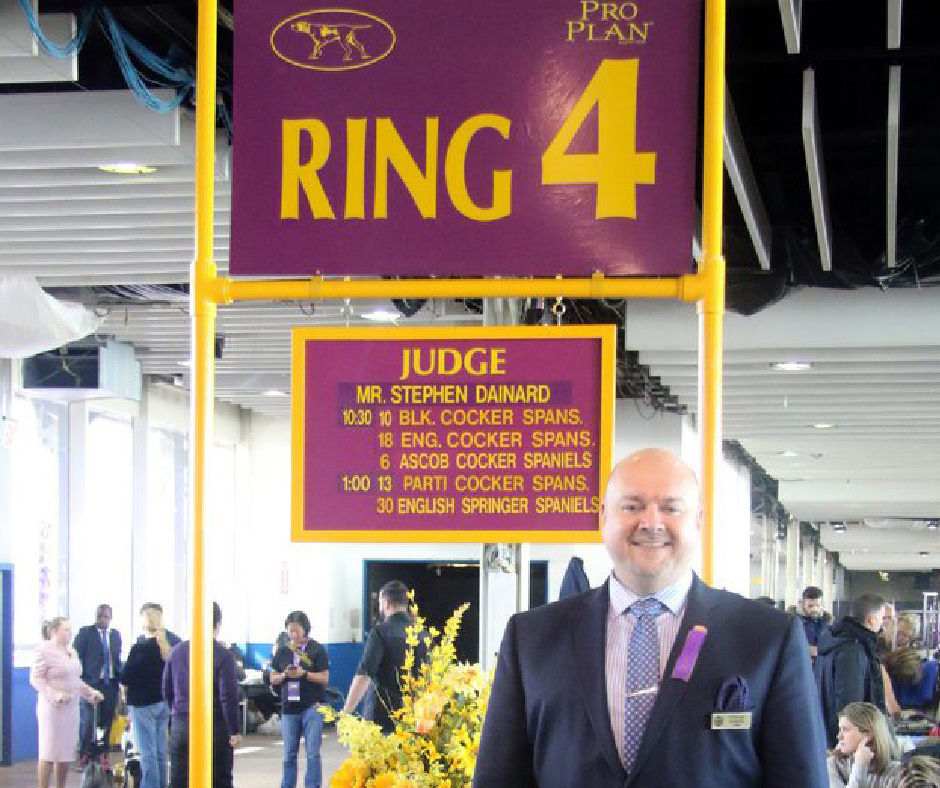608 – Dog Judging Process and Ethics with CKC Judge Steve Dainard
Dog Judging Process and Ethics with CKC Judge Steve Dainard
Host Laura Reeves is joined by Canadian Kennel Club all-breeds judge Steve Dainard for part one of their conversation about the judging approval process, judging ethics and other hot button topics as we progress through “meat and potatoes” November!
“So how do we help judges move into a place of thinking more about structure and less about the ‘paint job’,” Laura asks.
“Some of the biggest challenge is, do (judges) have that breed specific knowledge,” Dainard replies. “And are we consistent in this application? Are we judging fairly and equitably and being consistent enough so that people that are watching, and in particular breeders, can follow and they can say, this person really knows my breed?
“CKC judges get scrutiny from other non-Canadian judges about how we get there too quickly. and that maybe you know in your country, it takes it takes longer to get there. So, let’s agree that maybe somewhere in the middle might be more ideal.
“Organizing bodies do the best they can, given the current environment, to come up with a fair and equitable process. They don’t always get it right and many times changes just are just so laborious, it takes so long and really, what is the right fit. So, I understand those challenges.
“So, I think we need to work within the constraints of what we’re handed with hopefully trying to make improvements along the way. Some of those challenges are making sure we have breed specific knowledge, that we’re not missing the hallmark characteristics of a breed and just going for a more of a generic exhibit.
“If you have to ask, ‘Is there a Rule against that’, what’s happening is your moral guideline. Your compass is probably kicking in. I think you’ve already answered your question. If you have to question yourself like that, whether there’s a rule or regulation specifically forbidding that is irrelevant. You’ve already answered your question. It should not happen.
“We were raised in the sport. We spent decades in the sport. We know a lot of people. So now because we’ve chosen to change hats to now become judges, all of those relationships and those hotels we shared and vehicles we traveled in those don’t go away.
“My interpretation is that when that’s said as the reason to justify a win, my gut goes to ‘Have you really evaluated everything. Did you fairly look at the dogs in competition.’ Many times, I don’t think you’re really did that. I think that the political excuse was the easy excuse for you to justify that in your mind and poo poo the credibility of the ethical issue around the judging process.”
369 – Judges Share View from the Center of the Ring
Judges Share View from the Center of the Ring

The Prairie Christmas Dog Show judging panel on “pajama day”…
These judges share their 411 stories and their views from the center of the ring. This is part one of two from our panel discussion at the Prairie Christmas Dog Show in Regina, Saskatchewan.
Our panelists share common paths to involvement with purebred dogs. Frances Smith talks about family connections and, bonus, the story of transporting Yorkshire Terriers from England to Argentina by ship. Obedience competition that started with a mixed breed dog brought obedience judge Diana McKenzie to purebred dogs. Sue-Ellyn Rempel talks about coming to dogs from horses.
You only get one chance to make a first impression and these panelists agree it really is a critical piece to judging.
“I want to see type, quality, balance, and to know a dog is a dog, a bitch is a bitch,” Smith said. Rempel agreed, noting outline, angles and breed type are her first look.
McKenzie added that she wants to see that each handler-dog team to be a really a *team.*
Making the picture becomes a critical piece of success, as each judge has a picture in their mind of a “perfect” one of each breed.
Essentials of type
“Many people don’t exactly know what type is,” Smith observed. “Type is the essence of a breed. It’s what makes each breed unique and different from another.” Smith’s clear and concise definition of the six factors of type is magical.
The six elements that define each breed: head, color, size/measurement, temperament, coat, movement.
“Movement is breed specific. Temperament is type,” Smith said.
Applying breed type to obedience performances, McKenzie offered a fascinating perspective.
“With different breeds in obedience competition, you still have breed type,” McKenzie said. “Different dogs sit differently and at different speeds, for example. How straight they are affects score. Just because you’re fast doesn’t mean you’re going to be good. Sometimes slower workers are more precise workers.”
245 – Saturday Symposium: Words of Wisdom from Judges Panel
Saturday Symposium: Words of Wisdom from Judges Panel
Judges Stacey Davis, Fred Bassett, Darryl Vice and Doug McFarlane joined our panel at the Southern Oregon Kennel Club shows for a PureDogTalk Saturday Symposium discussion on mentoring the future.
Each of the judges shared their history in purebred dogs. From Davis who was born into the world of purebred dogs, to McFarlane who began his passion later in life, each laid out their own paths to help exhibitors understand they “weren’t hatched from an egg.”
Amongst the topics of discussion on the evening were match shows, 4-6 months puppy competition, junior showmanship and encouraging junior membership in kennel clubs.
Other important ideas included:
- Community outreach to public school students,
- encouraging exhibitors to consider performance and companion events
- dog shows that offer a fun atmosphere and variety of participation options
Join us for this great, moderated discussion, audience questions and encouragement for the future of the sport.



